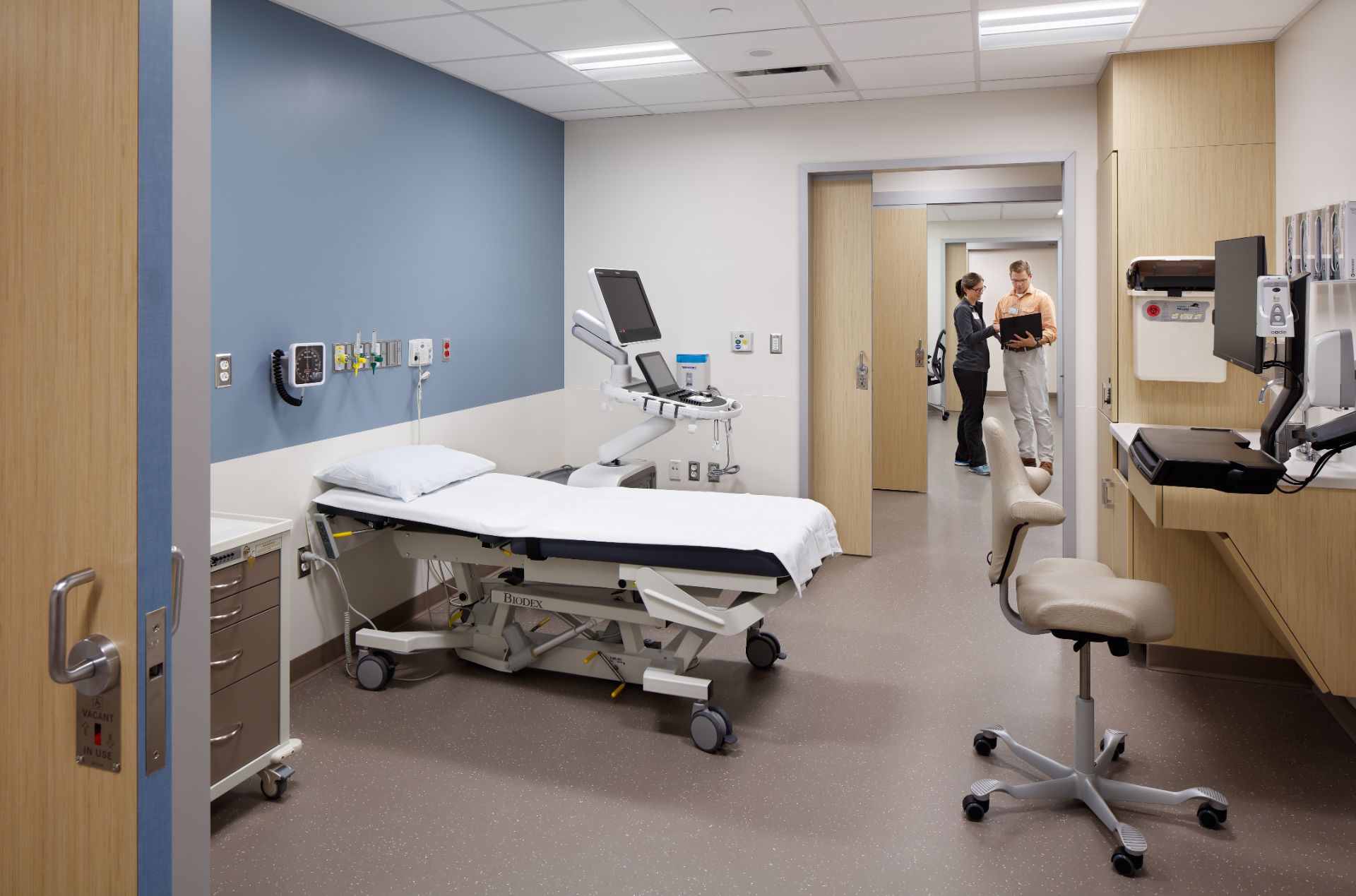
I recently had the pleasure of moderating Design Beyond 2020, a panel discussion with architecture and medical design leaders Ryan Ramsey, senior associate and medical planner of Perkins + Will’s Seattle studio, and Ivan Petrovic, associate, and Lamberto Smigliani, architectural department manager, of IBI Group Detroit.
As the title of the event suggests, the panel explored design challenges presented by the COVID-19 pandemic. Panelists discussed how designers, medical professionals and building owners are reimagining healthcare and commercial spaces in both the short term and long term.
As the situation is very much still evolving and far too new to determine a standardized set of best practices, it is nevertheless a very worthwhile discussion. As architects, building owners and occupants consider how interacting in public spaces will evolve in light of recent events, below are my key takeaways as the panel moderator:
Rapid Adoption of Emerging Technology
For many of us, increasing our reliance on technology has been a defining experience. From distance learning and Zoom meetings to telemedicine and virtual counseling, the pandemic accelerated adoption of existing technology out of necessity. While initially thought of as short-term solutions, it’s evident that many technological advances could be rendered long-term.
While discussing inpatient and outpatient spaces, Ramsey outlined several ways technology adoption could influence design, and telemedicine was at the top of his list. While telemedicine was a newer option used by early adopters only six months ago, many are finding it to be a convenient, low-risk alternative to in-person appointments.
Telemedicine is likely to change the nature of clinic visits, prompting new demand for spaces that enable healthcare providers to facilitate virtual appointments. Considerations of how to further deploy “contactless” technology solutions, such as online appointment scheduling, waiting room paging and technological monitoring of both patients and supplies, is expected to alter how spaces in healthcare facilities are designed and constructed.
Changes in the Workplace
While still in the early phases of returning to normal, workplaces are likely to follow the healthcare industry’s lead when it comes to adopting technological solutions. As business owners consider ways to reduce occupancy and mitigate the spread of germs, technology offers viable solutions. We’re already seeing solutions for mapping (or rather re-mapping) occupant locations, reserving hoteling desks or conference rooms, and monitoring cleaning and sanitization efforts. Similarly, technology could also be deployed to manage occupant movement in industrial workplaces (for example, monitoring shift changes).
Like telemedicine, “contactless” shopping was a newly pioneered concept some retailers offered prior to COVID-19. When convenience and social distancing were paired together as reasons to limit in-person interactions, there was suddenly a surge in demand for curbside pickup and e-commerce sales soared. Retailers and consumers quickly turned to technology to facilitate purchases of everyday items that would otherwise be conducted in-person.
Infection Control in Healthcare Facilities
Infection control is obviously always a top priority in healthcare environments. When occupants also have the issue top of mind, it’s taken into special consideration. Suddenly, both providers and patients are proactively seeking ways to minimize personal interactions and limit contact with high-touch surfaces. It’s hard to know how enduring these behavioral changes will be, though it’s likely that occupants will now prefer low-occupancy waiting rooms, touchless door operation, digital check-in, contactless payment and other virtual solutions, for a long time to come.
In addition to reducing high-touch surfaces, air quality management will be a central issue in healthcare, commercial and other high-occupancy spaces. Ramsey mentioned we may see a shift to negative pressurization – not just for isolation rooms, but entire departments in healthcare settings. Satellite waiting areas are a solution under consideration. In a similar vein, Petrovic noted the ongoing trend towards more efficient air handling units with higher MERV (minimum efficiency reporting value) ratings will only be accelerated in commercial spaces. And ventilation with fresh air is sure to be considered as a solution in several different environments.
Designing for the Future: Key Takeaways and Considerations
In upcoming blogs, we will continue to explore these themes in more depth. One primary takeaway that we will expand upon is how the pandemic accelerated many trends that were already on the rise. For example, opting for healthcare delivery closer to home, using technology for remote access in medicine and the workplace, natural ventilation, lean construction considerations and emphasis on IAQ (indoor air quality).
Modularity and flexibility were other noteworthy topics throughout the panel that warrant additional discussion. While prompted to discover new best practices because of today’s ongoing crisis, we should explore existing emerging technology first as we seek these solutions. At AD Systems, that means understanding how technologies, like automated touchless sliding door systems, can be deployed to support these efforts and configured to accomplish a myriad of design objectives.
We will also carefully consider the occupant journey through these redefined spaces. Examining how we contribute to accessibility, occupant management, infection control and flexibility for design and construction will be paramount. Following the lead of architects who are rapidly expanding their knowledge base to serve their clients and occupants, we can all play an important role by thinking critically and creatively about people and interaction in public spaces.
Tysen Gannon, LEED AP, AD Systems has more than 15 years of experience in the architectural products industry, including roles in sales, product management, research and marketing, with a focus on glass and glazing, fenestration and façade systems. www.specadsystems.com







